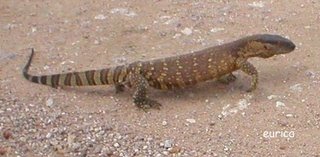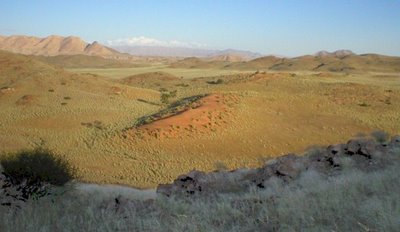Windhoek is small for a city and a capital city to boot. This neat clean city without smog, is situated between mountains on an uneven hilly terrain. The overall atmospheer in the city is friendly and to get away from a stressed situation at work, walk to the nearest hill.
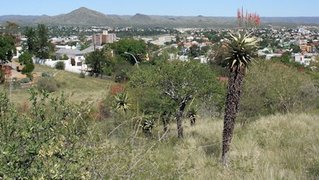
This is Windhoek in the winter. The nights often goes down to freezing but as soon as the sun is up in the morning the temperature heats up quickly.
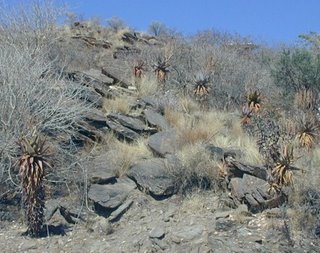
The botanical garden is my favourite place to visit. Anybody interested in out of the ordinary plants here are many to see. The garden grounds are large with walking paths over the hills. Most of the many different trees are named with more plants and aloes to enjoy.

The baboons tend to be a dangerous nuisance. They are cute to look at, but they can attack and the males are large enough to kill a human or dog. The photo below is from a large handsome male who saw the ripe papaw in the garden and decided that it was just what he wanted. We did not want to agitate him so we took the photo through the kitchen window. This gives the impression that he is behind bars, but we were strictly speaking behind the bars not him.


Gorgeous little fellow this gecko. Those large eyes are handy for his nightlife adventures. He can run on the ceiling while tiny slits under his feet forming a suction on the substrate. His feet feel like velvet if he is on your hand. I do hope the old tale that they are poisonous has been cleared in modern times. He will hiss to try and defend himself and his bite feels like a soft pinch. It does not even leave a red mark, far from drawing blood, let alone the ridiculous poison tale.
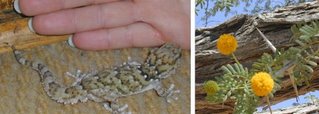
He will run if he is on a wall but on this carpet he thinks that he will disappear like when he is on the bark of a tree, so he remains still. This works out fine in nature on a camelthorn tree but at night on a carpet some-one will step on him. Consequently any gecko on the carpet, no matter how cute he looks, is put outside.











